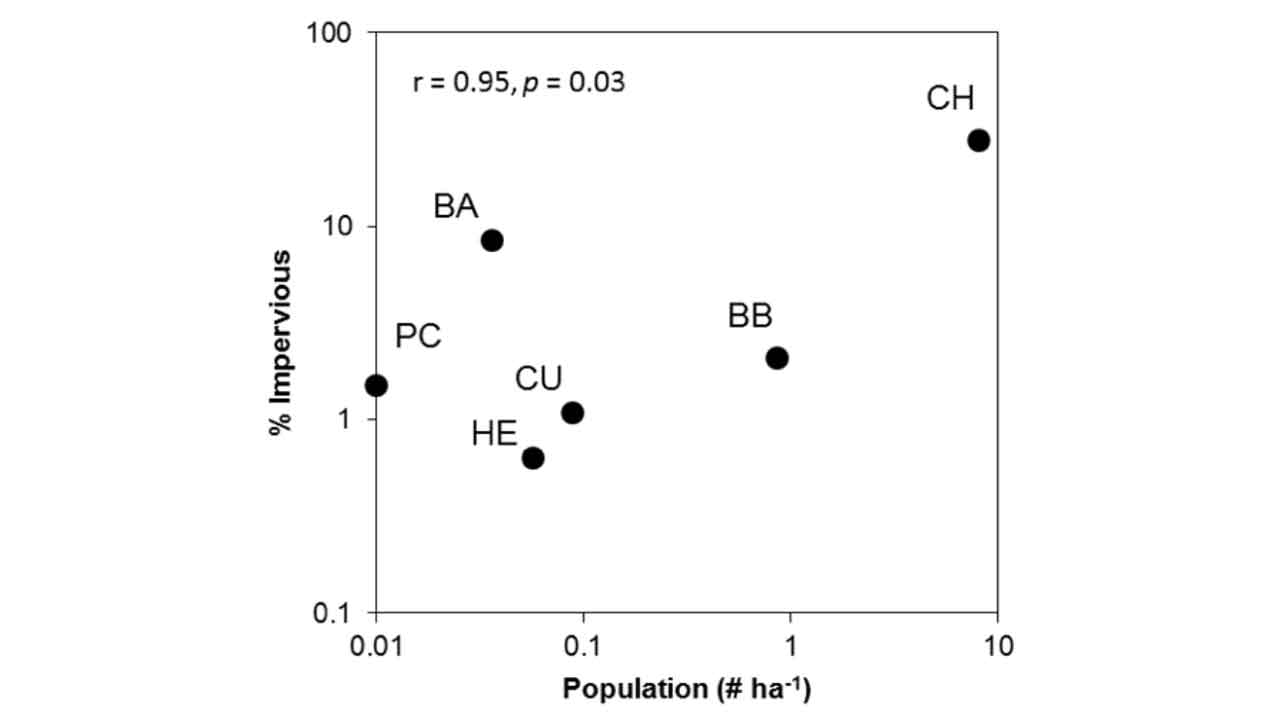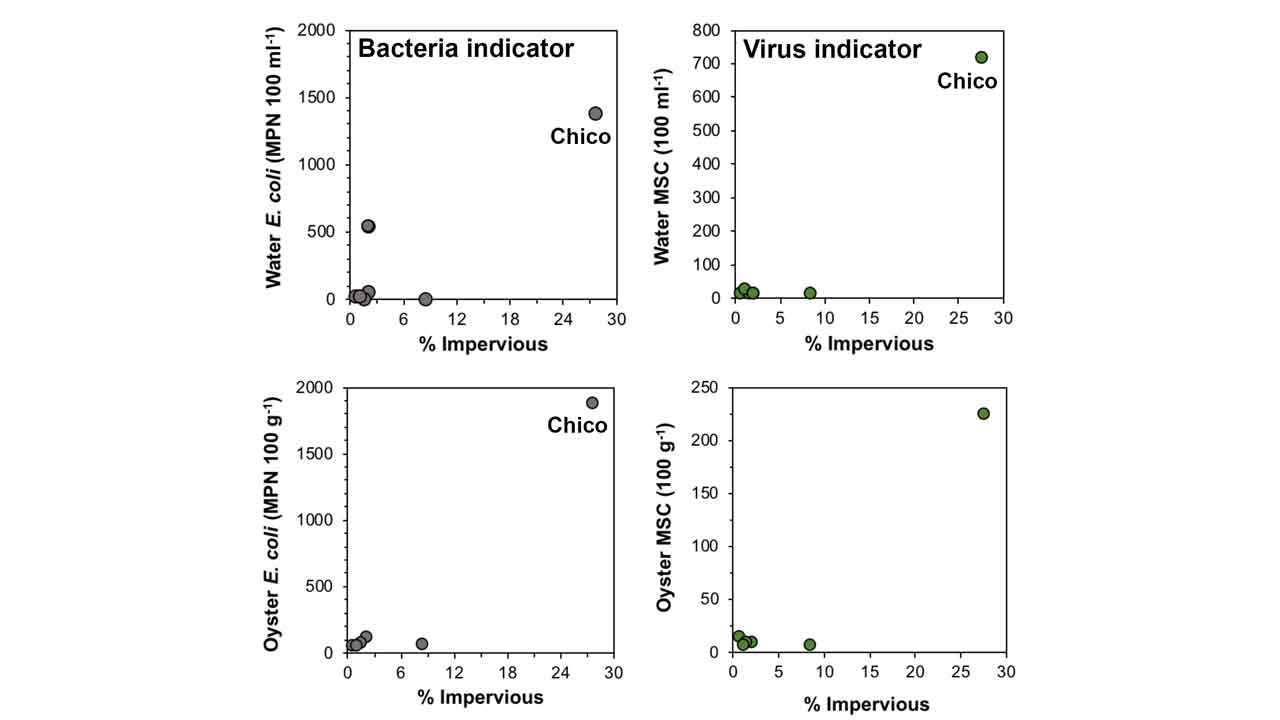Results
Land-use Change Results

Impervious surface area (associated with urbanization and industrialization) has increased with population growth on Grand Bay area watersheds, particularly Bayou Chico (CH) and Bayou la Batre (BB). Upstream construction of Highway-90 and Interstate-10 also interrupted freshwater flow and sediment deposition to Grand Bay watersheds (Darrow et al. 2017a).
Witness the change in land use through time in the Grand Bay system:
- Land use change 1955 – 2010 (watch video)
- Impervious surface change 1984 -2020 predicted (watch video) (Videos courtesy of Wei Wu, USM/GCRL)
Nutrients and Microbes Results

The concentration of nitrogen (not shown) and microbes (indicator bacteria and virus) in water, sediments, and oysters increased with increased impervious surface area in the Grand Bay system, driven by results at Bayou Chico. Fecal indicator bacterium Clostridium perfringens also had highest concentrations in modern sediments from Bayou Chico and Bayou la Batre (wastewater-influenced sites).
Bayou Chico is impaired results

Watersheds having > 25% impervious area are considered “degraded” based on previous studies (Schueler 1992, Arnold & Gibbons 1996).
During this study we found that Bayou Chico, Mississippi was affected by a combination of stormwater and sewage inputs, resulting in high nutrient and microbe concentrations, which are consistent with impaired conditions (see Nutrients and microbes section for data).
Consistently high C. perfringens (fecal indicator bacterium) concentrations in dated sediment core sections from Bayou Chico indicate decades of water quality impairment at this site.
Wastewater Treatment Results

Wastewater treatment helps protect water quality, but needs to be sufficient for the type and quantity of sources and must be properly maintained.
Four wastewater treatment plants in the Grand Bay area removed >99% of fecal indicator microbes, including fecal coliforms, E. coli, and Male-specific coliphage (MSC) in effluent (left panel). C. perfringens forms spores that can be resistant to wastewater treatment, reducing effectiveness of removal by some facilities.
Even after treatment, fecal indicator microbes were delivered to coastal waters in wastewater effluent (right panel). Pascagoula WTP effluent delivered higher microbial loads to coastal waters than other WTPs.
In contrast, the recently upgraded Bayou la Batre plant (NBLB) delivered lower average microbial loads than other plants, highlighting the value of facility maintenance. Plant upgrades resulted in more effective wastewater treatment at Bayou la Batre since October 2012.
(BLB = Bayou la Batre wastewater treatment plant prior to upgrade.
MP = Moss Point wastewater treatment plant)